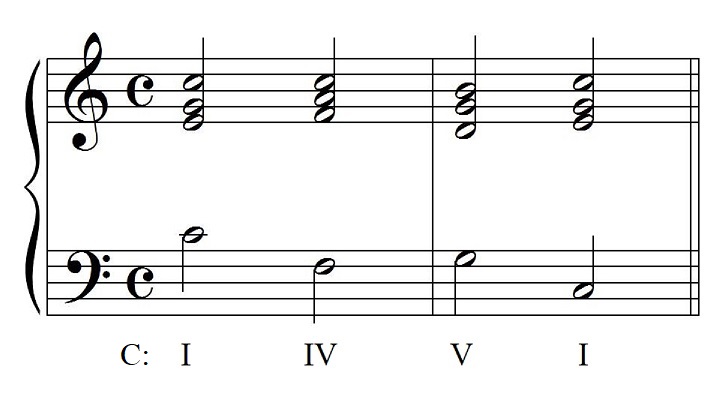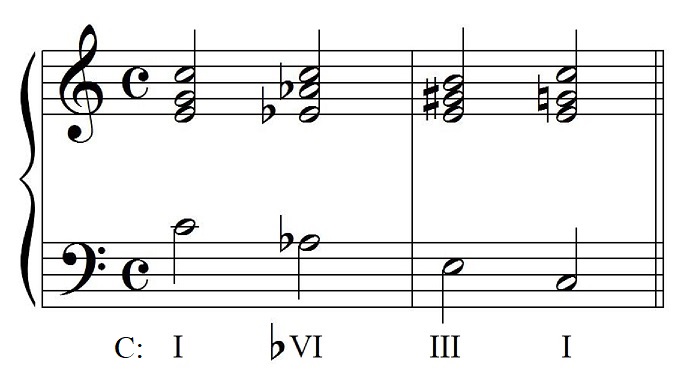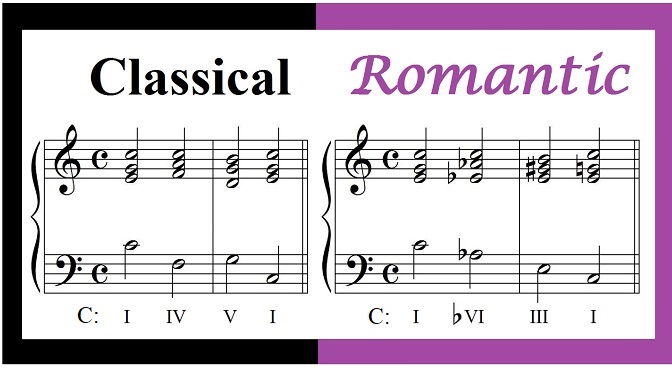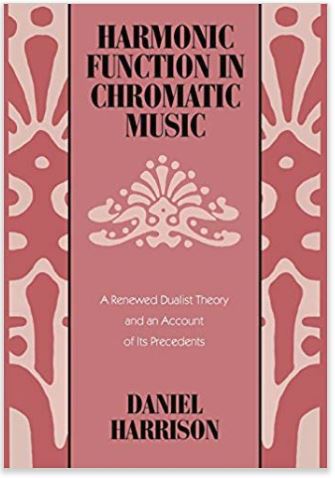Equal Divisions of the Octave
A significant feature of the chromatic harmony in late Romantic music is the use of nontraditional harmonies to convey subdominant or dominant function. Consider, for example, the progression I-IV-V-I, which is so common in classical music:

This motion from tonic through the subdominant to dominant and back to tonic is natural and familiar, but the Romantic composer is naturally driven to seek less mundane ways of achieving this progression, substituting more exotic chords for the expected ones. Some of the theory behind these substitute harmonies is set forth by Daniel Harrison in his highly recommended book, Harmonic Function in Chromatic Music. Harrison’s principal objective is to provide a more cogent explanation of harmonic progression in the music of late Romanticism.
Certain pitch classes convey subdominant or dominant function very effectively even in chords other than the standard subdominant and dominant triads. In C major, for example, the leading tone B can convey dominant function very effectively in a III triad (E major) or a VII triad (B major).
The most effective communicator of subdominant function is the sixth scale degree, and the minor-mode sixth degree in particular conveys the sense of subdominant even more strongly. In Harrison’s dualist theory, dominant naturally aligns with major mode and subdominant with minor mode; consequently, in C major, pitch class Ab (borrowed from the parallel minor) is an even more potent indicator of subdominant than is pitch class A. Therefore, triads that contain Ab, like bII (D-flat major) or bVI (A-flat major) are very convincing subdominant substitutes. The former is the Neapolitan triad, which has been used ever since the seventeenth century and has thus become somewhat hackneyed; however, bVI is an attractive Romantic alternative.
If we substitute bVI and III for IV and V respectively in our original progression, we get this colorful variation:

The bass line, containing the triadic roots, divides the octave into three equal parts (since the diminished fourth is enharmonically equivalent to each of the two major thirds). Such progressions based on equal divisions of the octave are characteristic of late Romantic chromatic music.
Just as the roots of the traditional IV and V chords appear in symmetric positions a perfect fifth below and above the tonic, in the same way the roots of our Romantic substitutes, bVI and III, appear in symmetric positions a major third below and a major third above the tonic:

In an upcoming post to this blog, I plan to show how I use major-minor seventh chords based on these same roots to establish the tonal center in the opening of my Rhapsody for Woodwinds and Piano.


